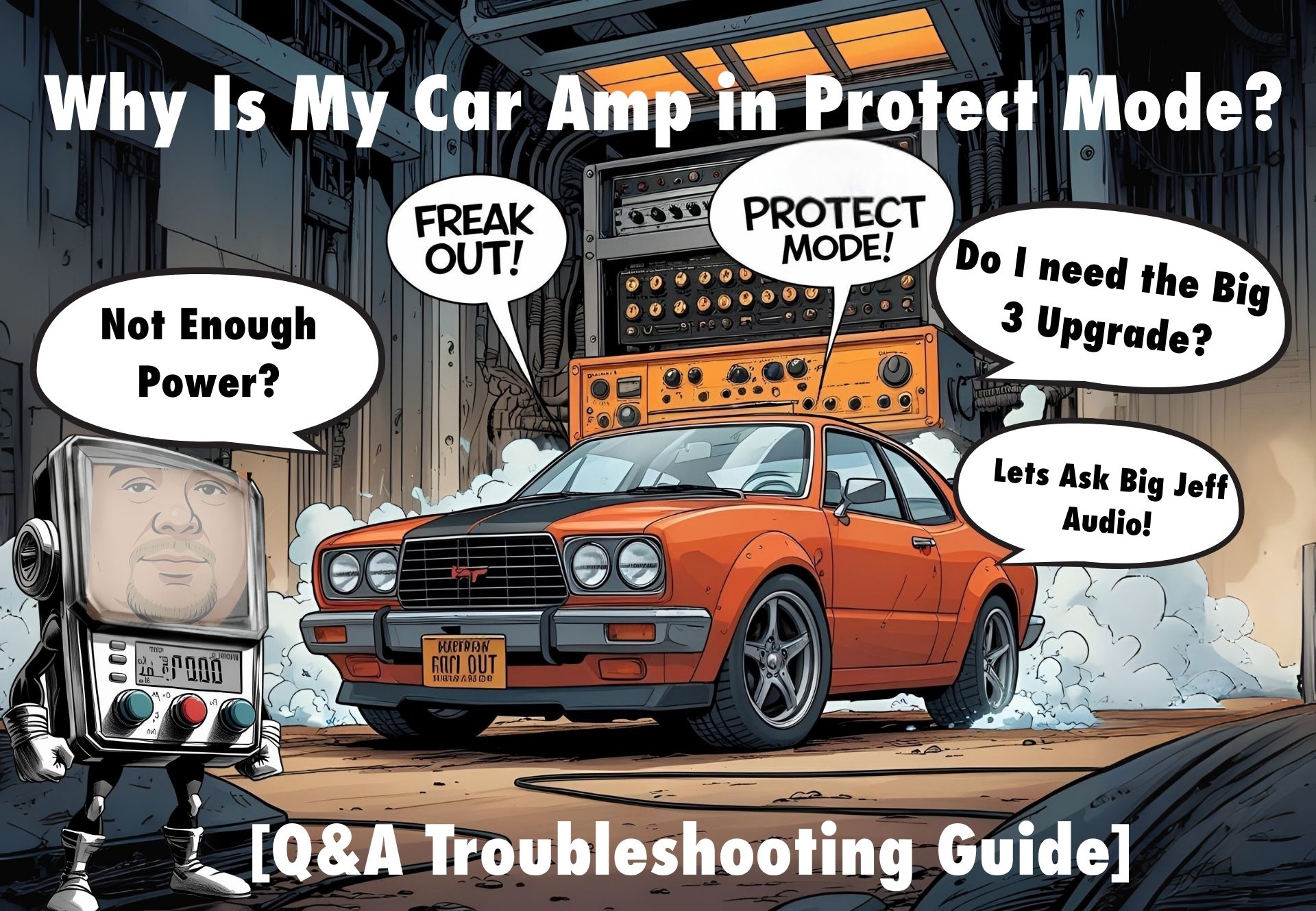Why Is My Car Amp in Protect Mode? [Q&A Troubleshooting Guide]Updated 4 months ago

You’re all set to bump your favorite playlist, but instead of bass, your amp flashes a light and shuts down. Ugh. Don’t stress — that’s your amp going into protect mode.
Think of protect mode as your amp’s way of saying:
“Hey, something’s off, and I’m not about to fry myself or your system.”
Let’s break it down Q&A style so you can get back to the music.
Q: What exactly is protect mode?
Protect mode is your amp’s built-in self-defense. It kicks in when something could cause damage, like:
Loose or faulty wiring
Subs wired too low for the amp’s rating (impedance mismatch)
Low voltage from your car’s electrical system
Overheating from long play at high volume
Or, sometimes, the amp itself failing internally
Q: Is the problem my wiring or my amp?
Here’s a simple test:
Disconnect all speaker and subwoofer wires from the amp’s outputs.
Turn your car on and check the amp’s light.
If it stays normal (blue/green) → issue is downstream (subs, wiring, or speaker load).
If it still goes into protect (red/blinking) → issue is upstream (power, ground, voltage, or the amp itself).
Think of it like plumbing: downstream is what’s leaving the amp (subs/speakers). Upstream is what’s feeding it (power and ground).
Q: How do I check if my subs are wired right?
Use a multimeter set to measure resistance (ohms). With wires disconnected from the amp:
Touch the leads to the wires going to your subs.
Compare the reading to your amp’s rating (example: if the amp is 2-ohm stable, you don’t want a reading below 2 ohms).
👉 If the number is too low, you’ll need to rewire or replace a faulty speaker.
Q: Can low voltage cause protect mode?
Yes — amps are picky. They like 12.5V–14.4V while running.
If voltage dips below 11V at startup, the amp may shut itself down.
That could mean a weak battery, an alternator that can’t keep up, or undersized wiring.
💡 Pinky Pro Tip: If you’re running a big system, upgrade your wiring (“the big three”), battery, or add a capacitor to keep voltage stable.
Q: What’s the right way to wire power and ground?
Use at least 4 AWG wire (go bigger, like 1/0 AWG, for heavy setups).
Keep the ground short, tight, and bolted to bare, unpainted metal.
Replace blown or undersized fuses.
Clean corrosion and tighten connections.
Q: What if I’ve checked everything and it’s still in protect mode?
If you’ve tested wiring, voltage, and load but the amp won’t behave, chances are it’s an internal fault. At that point, repair or replacement is the only fix.
Bottom line: Protect mode isn’t bad news — it’s your amp saving itself (and your gear). Check upstream vs. downstream step by step, and you’ll usually track down the problem without too much headache.
👉 Amplifiers enter protect mode as a safety feature to prevent damage. This can happen due to overheating, short circuits, low voltage, or wiring issues. Please check the installation, power supply, speaker impedance, and wiring. If the issue continues, it’s best to consult a professional car audio technician or the amplifier's manual for more help.
By: Pinky @BigJeffAudio - Creative Team
📢 Fast Fix Checklist
Disconnect speaker/sub wires → If the amp stays on, issue is downstream (subs, wiring, speaker load).
Check voltage at amp → Needs 12.5V–14.4V while running. If under 11V, check battery/alternator/wiring.
Test sub wiring with multimeter → Make sure final ohm load isn’t lower than the amp can handle.
Inspect power & ground → Use at least 4 AWG wire, short/solid ground to bare metal, fuses intact.
Still in protect? → Likely an internal amp fault.